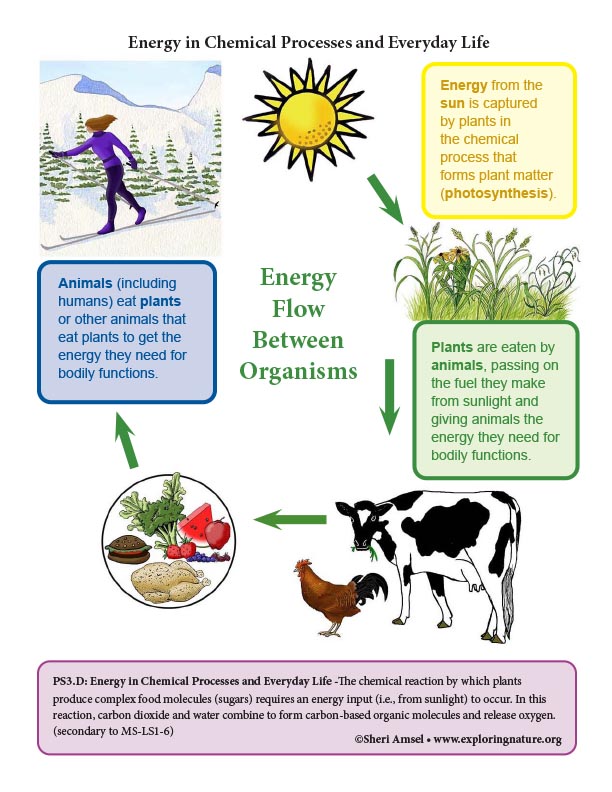

When we eat and digest food, it is broken down into smaller and smaller units until it becomes small enough to be used in our cells as glucose molecules. At the same time, we are inhaling oxygen that travels from our lungs through our bloodstream into smaller and smaller blood vessels until it reaches our cells. When glucose and oxygen reach the cells, they have the materials needed to perform another important metabolic process called cellular respiration. This process starts in the cells’ cytoplasm and is completed in the mitochondria - the cellular powerhouse. In those tiny organelles, one molecule of glucose and six molecules of oxygen are transformed into 36 molecules of ATP – the energy cells use to run their metabolic processes, such as breathing, circulating blood, digesting, responding to stimuli, creating new cells, repairing and growing, moving muscles, etc. Everything the body needs to do uses energy.
Cellular respiration occurs in every cell in both animals and plants. Let’s compare them.
Plants (and other photosynthetic organisms) create glucose molecules through the chemical process of photosynthesis, which also releases oxygen. The glucose molecules then drive cellular respiration in the plant cells, which creates ATP, which fuels plant growth and reproduction.
Animals eat the plants (or other animals that eat plants) and break them down through digestion into carbohydrate molecules and then into the smaller glucose molecules. The glucose molecules then drive cellular respiration in the animal calls, which converts the glucose and oxygen into ATP, the cellular form of energy, which fuels animal growth and reproduction. It also releases carbon dioxide and water.
Disciplinary Core Ideas
LS1.C: Organization for Matter and Energy Flow in Organisms
• Within individual organisms, food moves through a series of chemical reactions in which it is broken down and rearranged to form new molecules, to support growth, or to release energy. (MS-LS1-7)
• Cellular respiration in plants and animals involve chemical reactions with oxygen that release stored energy. In these processes, complex molecules containing carbon react with oxygen to produce carbon dioxide and other materials. (secondary to MS-LS1-7)
When you research information you must cite the reference. Citing for websites is different from citing from books, magazines and periodicals. The style of citing shown here is from the MLA Style Citations (Modern Language Association).
When citing a WEBSITE the general format is as follows.
Author Last Name, First Name(s). "Title: Subtitle of Part of Web Page, if appropriate." Title: Subtitle: Section of Page if appropriate. Sponsoring/Publishing Agency, If Given. Additional significant descriptive information. Date of Electronic Publication or other Date, such as Last Updated. Day Month Year of access < URL >.
Amsel, Sheri. "Energy in Chemical Processes and Everyday Life - Reading and Diagrams (6-8 Grade NGSS)" Exploring Nature Educational Resource ©2005-2024. December 13, 2024
< http://exploringnature.org/db/view/Energy-in-Chemical-Processes-and-Everyday-Life-Reading-and-Diagrams-6-8-Grade-NGSS >

